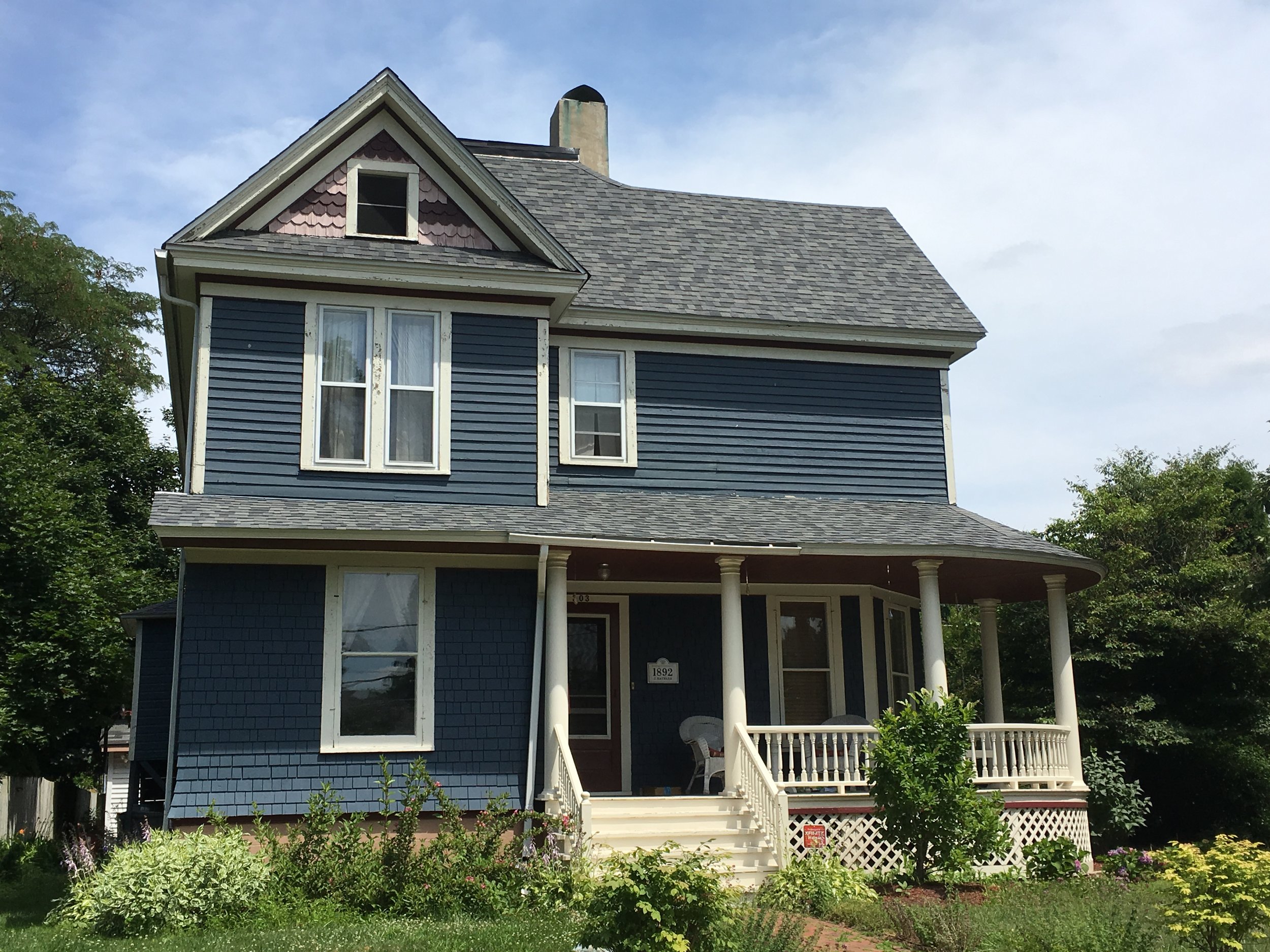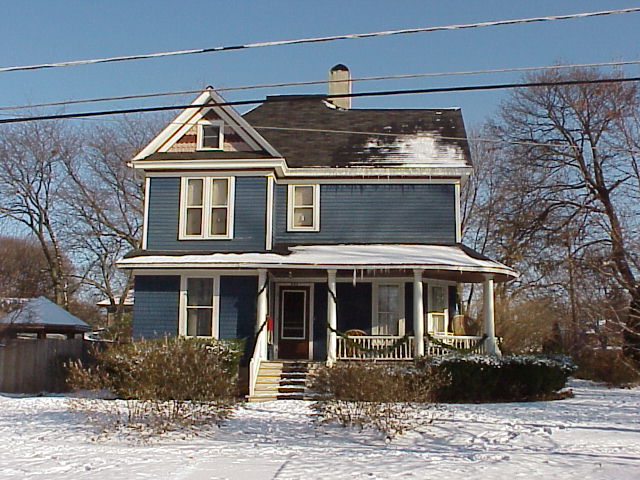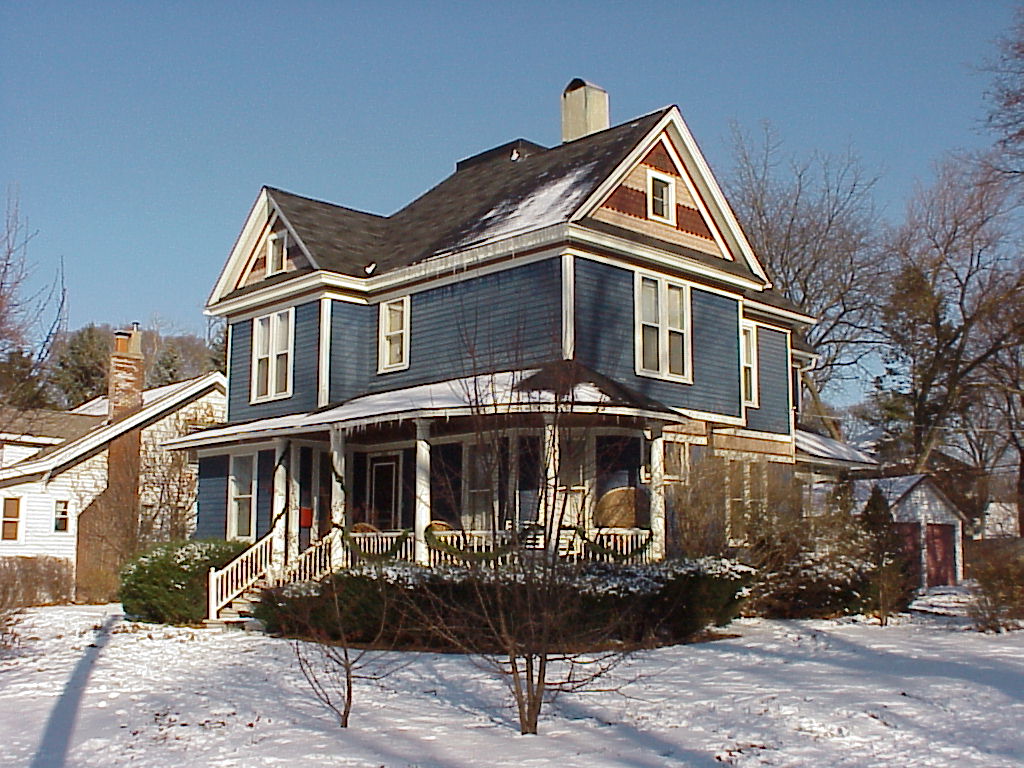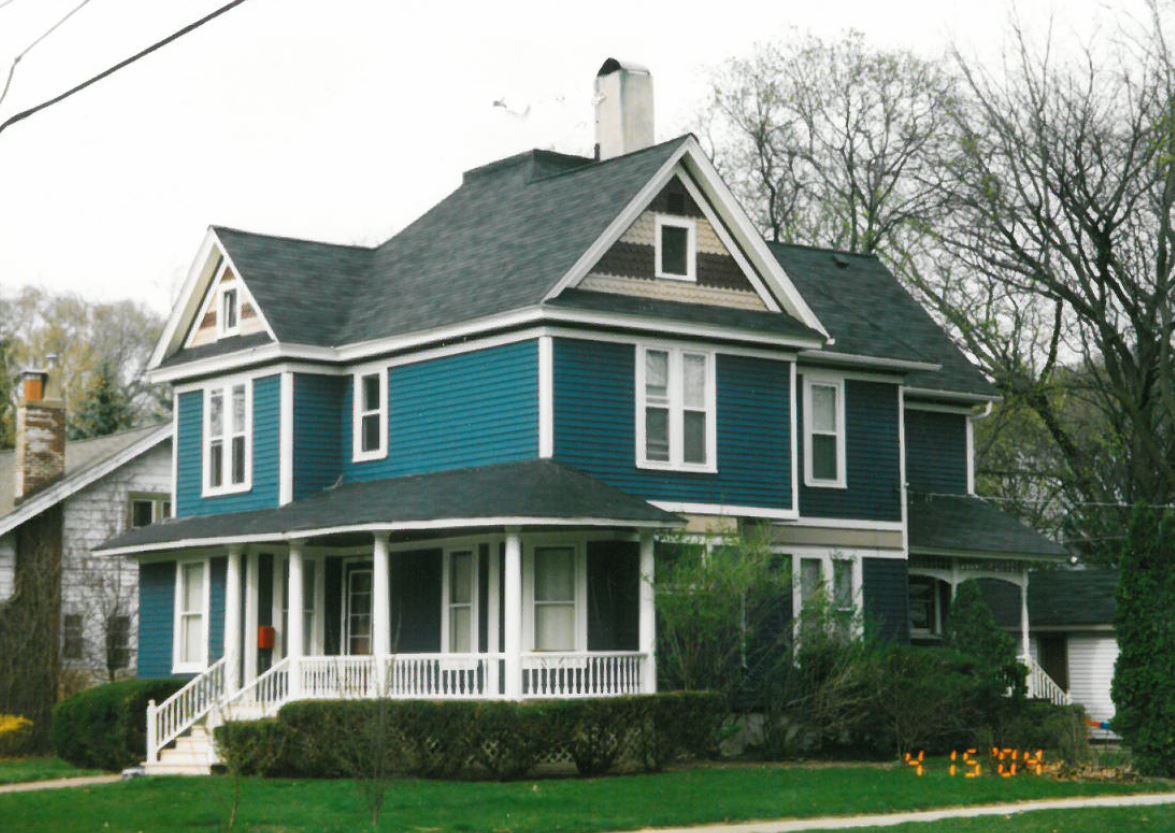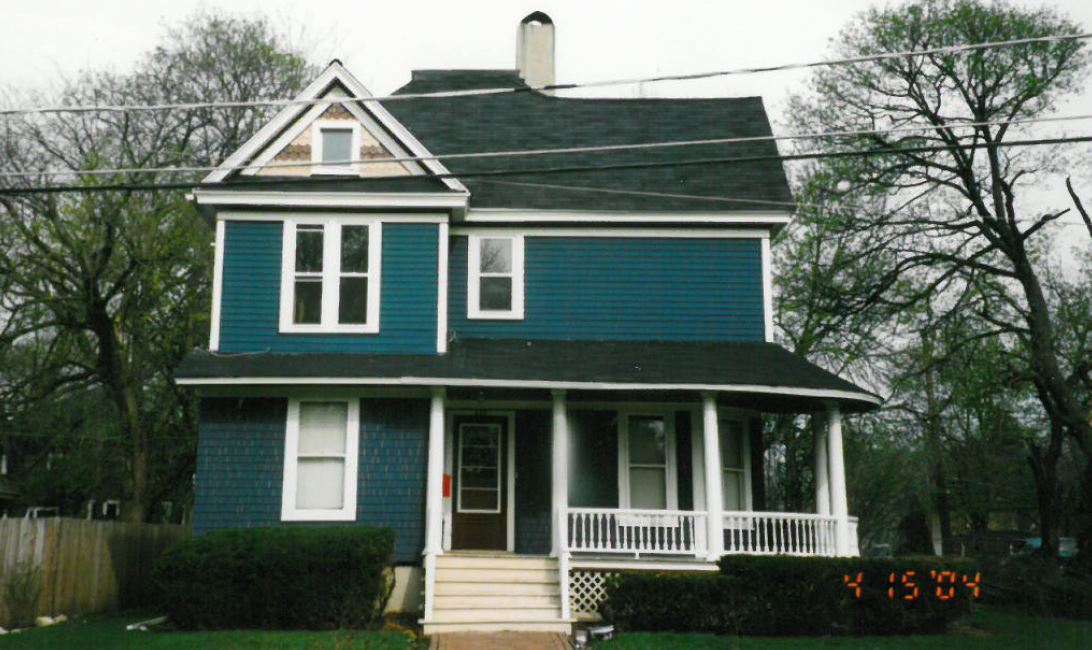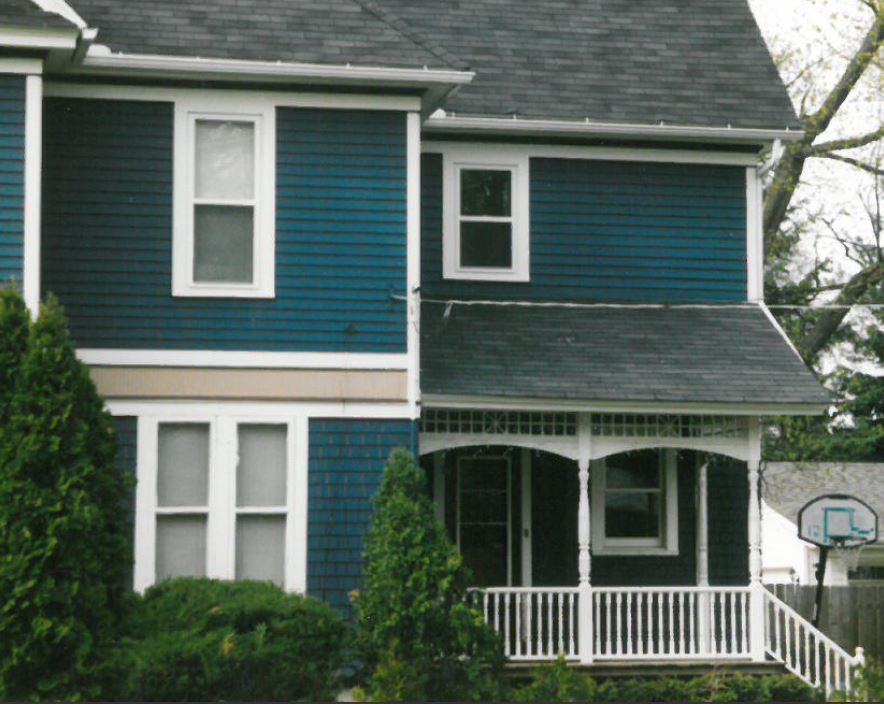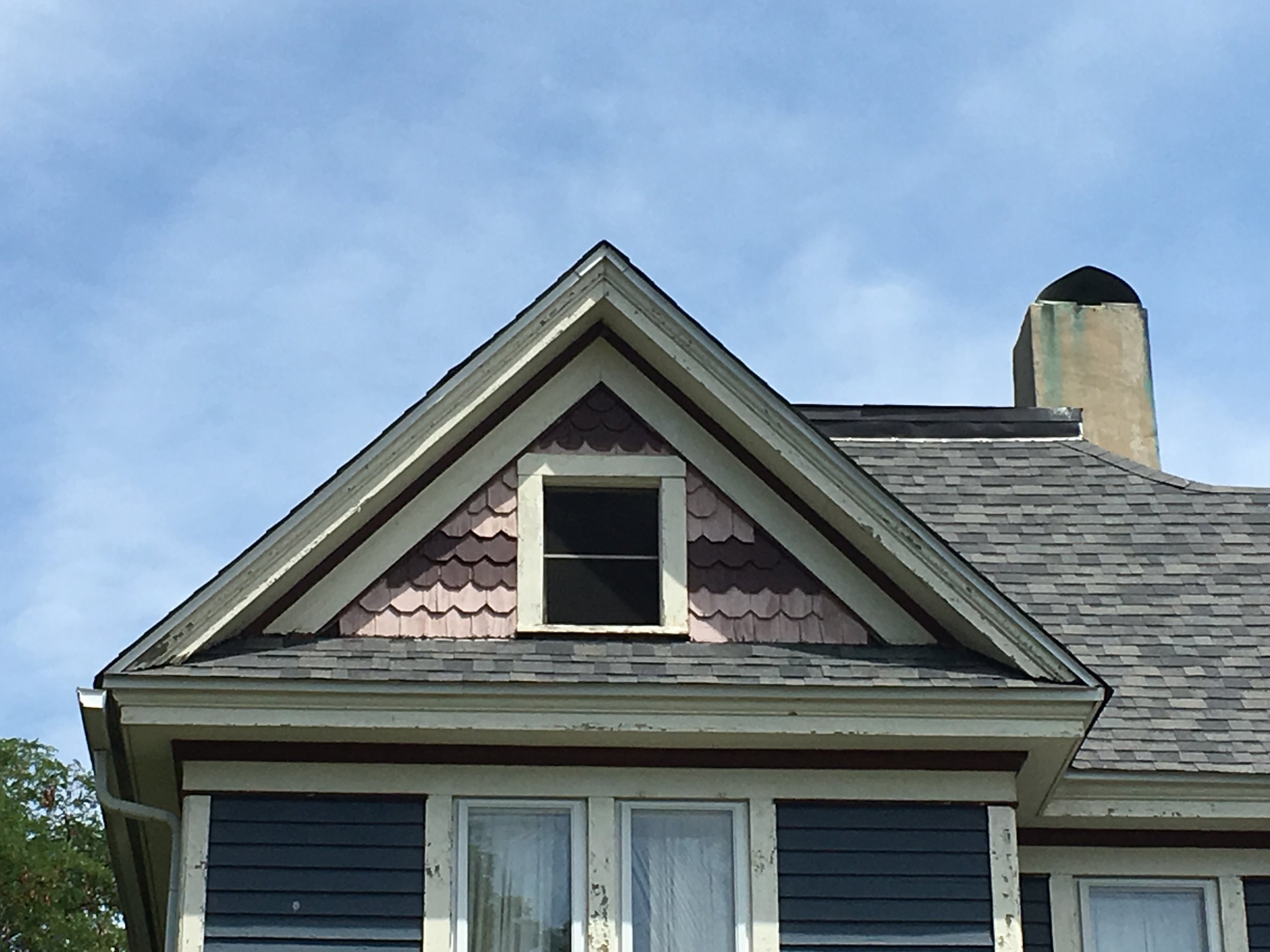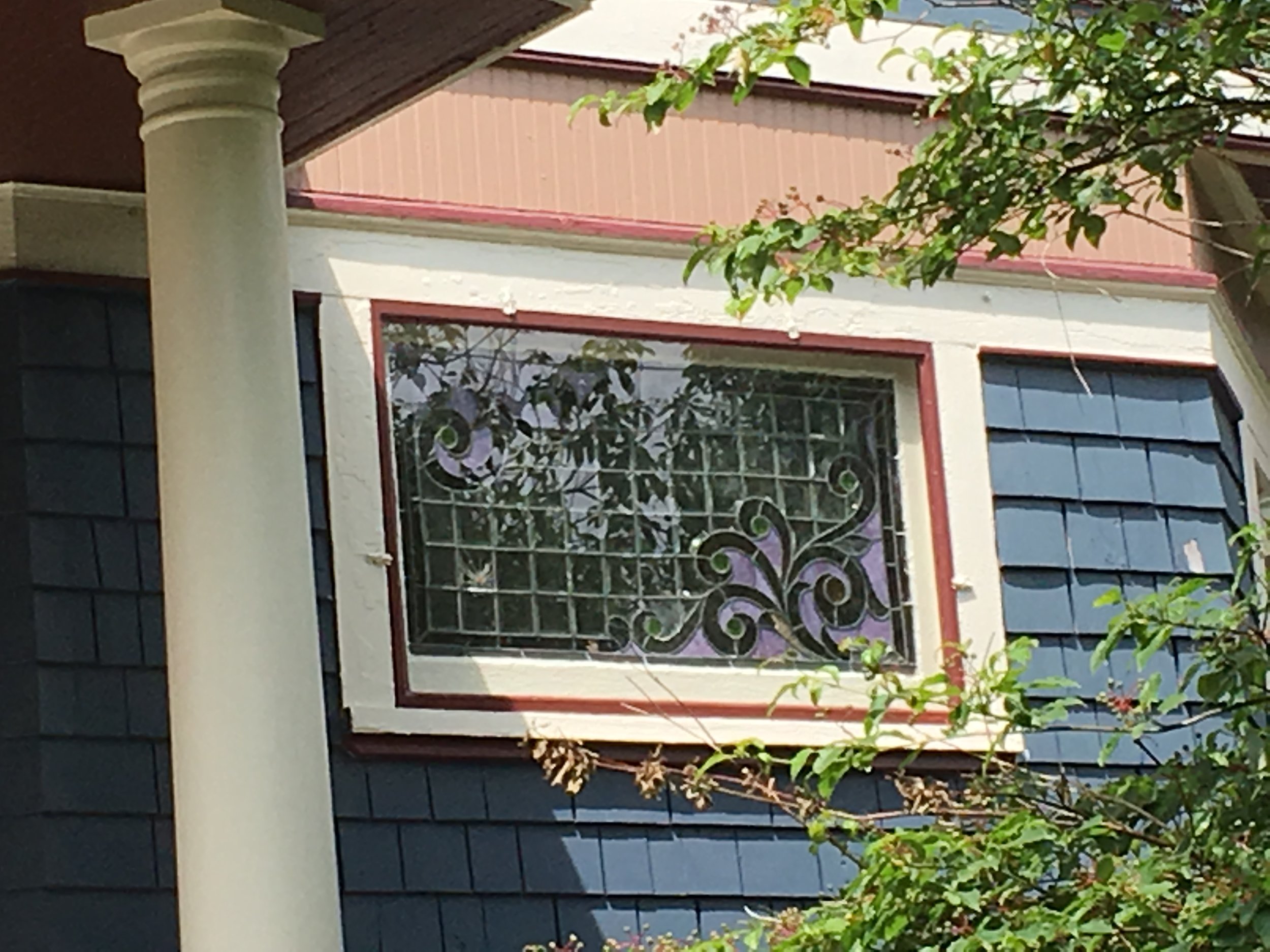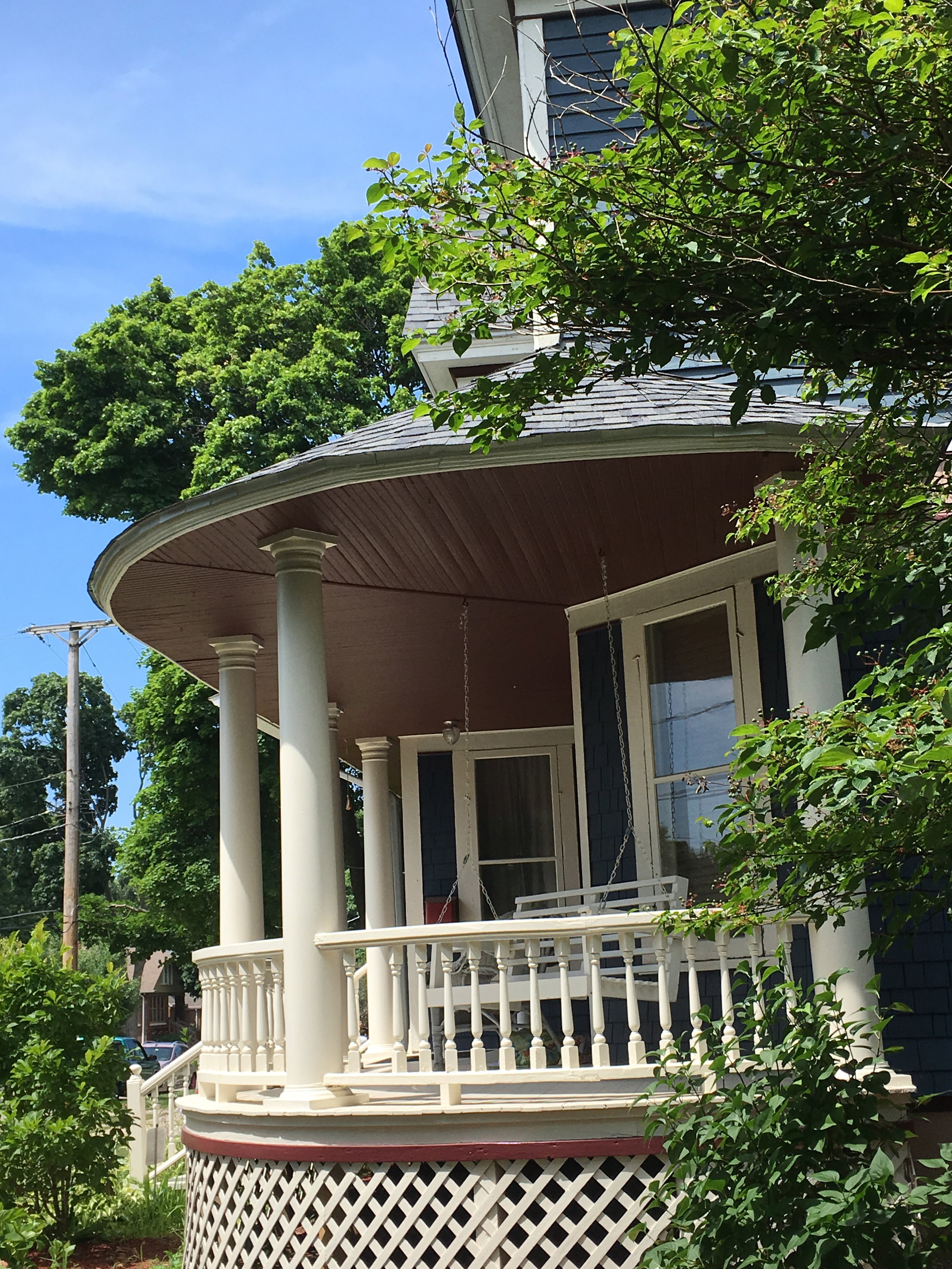303 N. WORTH AVENUE
HISTORIC SIGNIFICANCE
303 N. Worth Avenue was built in 1892 for James Hayward. The Hayward family was from Massachusetts and came to Elgin in 1886. Joel and Sarah Hayward and their three sons and three daughters lived on Summit Street, west of Dundee Avenue. Joel Hayward, Sr. died shortly after and the family relocated to Elgin's west side.
During the building boom that started in the late 1880s and ended with the financial panic of 1893, James Hayward made a name for himself as a carpenter. Starting in 1890, he was listed in the annual construction reviews published in Elgin newspapers. That year, he was the sole builder of three houses on Elgin's west side; one of the houses was for his sister, Cornelia Veazie, on Highland Avenue. James formed a construction business with his brothers, Joel Jr. and Stevens, becoming the "Hayward Brothers, Contractors and Builders."
In late 1899, James Hayward sold 303 N. Worth to Grant Mahan, an employee of the Brethren Publishing Company on S. State Street. Two more owners followed, both employees of the publishing company. In 1910, the house was sold to Annette Hinman, a widow from New York state. Soon after buying 303, Mrs. Hinman began renting out the upstairs. She passed away in 1926, leaving the home to her brother, John.
ARCHITECTURAL SIGNIFICANCE
303 N. Worth Avenue is of the Queen Anne style. Among its multiple roof lines, the house has a prominent front facing gable, a side gable, and a hipped section. The upper story is clad in horizontal clapboard while the lower story is lad in shingles. Roof peaks contain shingles cut in decorative shapes. Vertical and horizontal banding is used to outline the house; a wide horizontal band is used where the two stories meet on the south facade. Windows are either in pairs or single and are in varying sizes. The wrap around front porch contains classical columns while the rear porch contains spindlework and slender, turned supports.
The house is distinguished by its south facade, facing Lawrence Avenue. It is here that the multiple roof lines are most visible; the use of three types of wall cladding are most prominent; multiple window sizes and groupings are prominent; and the wide, horizontal banding is used and painted in contrasting colors.
TIMELINE OF PREVIOUS OWNERS
Sources: 2005 Heritage Plaque Application; Audio: TextAloud

